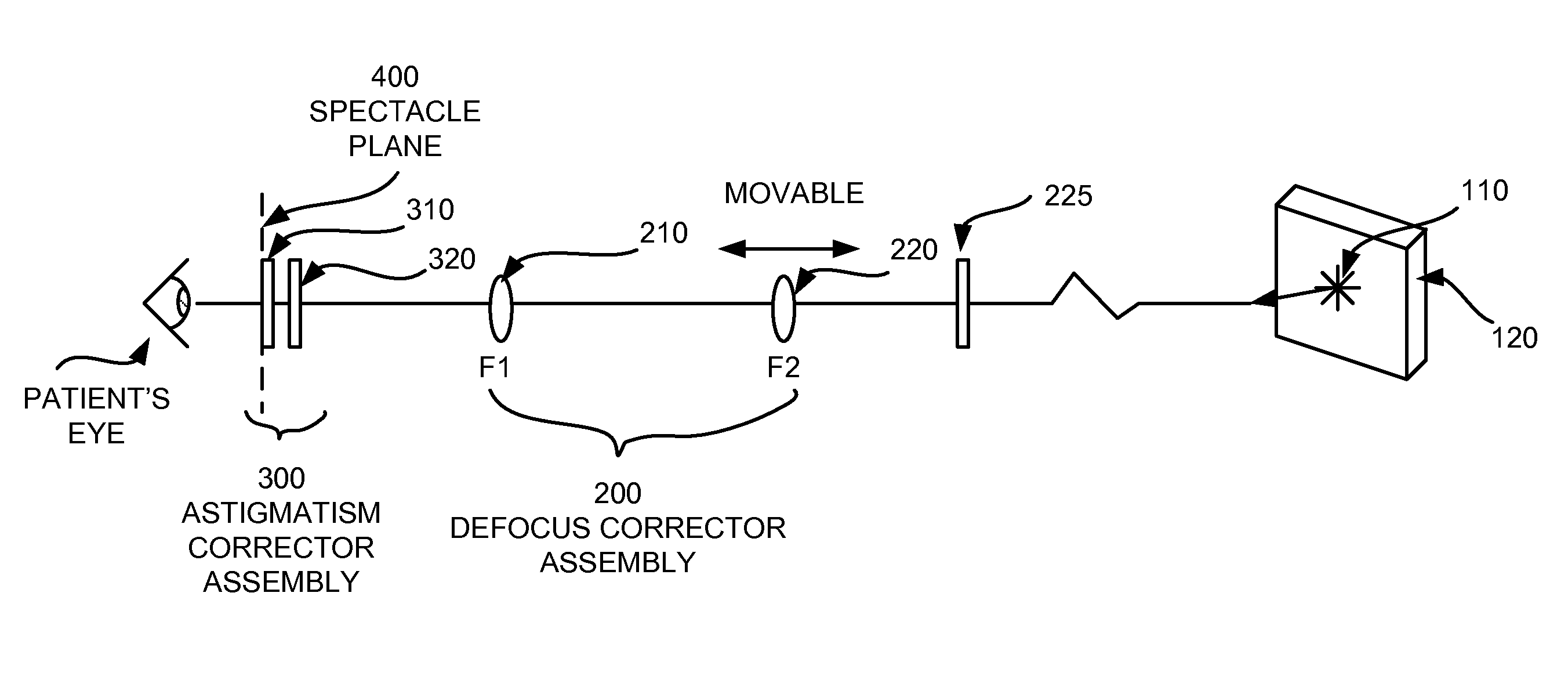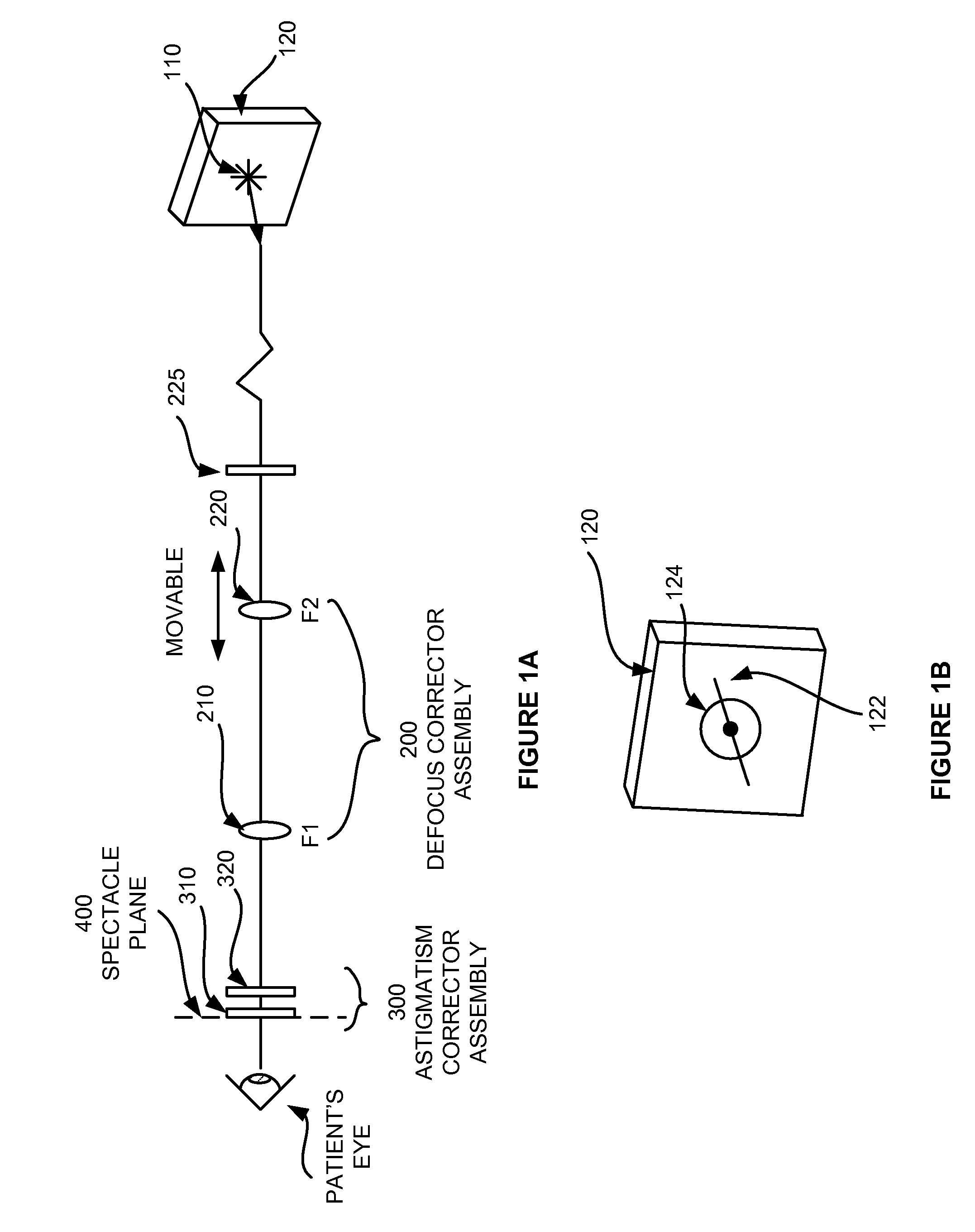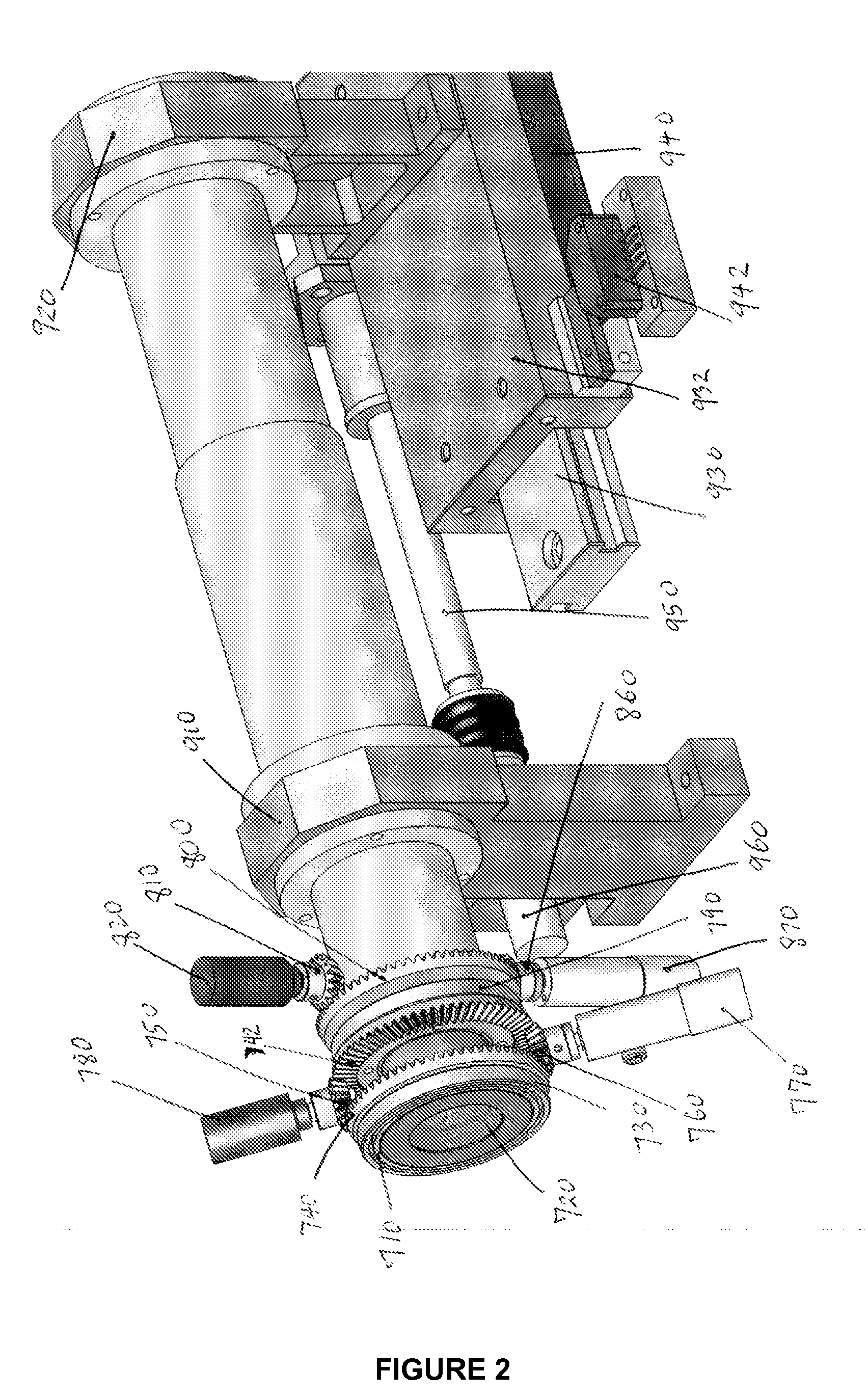Subjective Wavefront Refraction Using Continuously Adjustable Wave Plates of Zernike Function
a wave plate and function technology, applied in the field of subjective wavefront refraction using continuously adjustable wave plate of zernike function, can solve the problems of not even being able to find the optimal sphere, cylinder and axis of the patient, and unable to correct the pre-operation errors
- Summary
- Abstract
- Description
- Claims
- Application Information
AI Technical Summary
Benefits of technology
Problems solved by technology
Method used
Image
Examples
Embodiment Construction
[0047] In the entire specification, the term “wavefront refraction” shall be broadly construed to include any process of providing wavefront compensation to a patient's eye, while the patient is looking at a target. A “wavefront refractor” is a device which an eye care professional may use to perform refraction that includes correcting higher order aberrations of the eye, or sometimes referred to as higher order refractive errors. The “+ / −” is also used herein before the second index of Zernike functions to represent a grouping of the pair of Zernike polynomials that have a same first index, wherein the second index has opposite sign. For example, the pair of Trefoil, Z(3,−3) and Z(3,3) are to be paired, and Z(3,+ / −3) shall designate a combination of the two Trefoils in an adjustable wave plate configuration. The term wave plate shall mean an optical plate that has the property of inducing an optical path difference profile. When a light wave passes the plate, the spatial profile ac...
PUM
 Login to View More
Login to View More Abstract
Description
Claims
Application Information
 Login to View More
Login to View More - R&D
- Intellectual Property
- Life Sciences
- Materials
- Tech Scout
- Unparalleled Data Quality
- Higher Quality Content
- 60% Fewer Hallucinations
Browse by: Latest US Patents, China's latest patents, Technical Efficacy Thesaurus, Application Domain, Technology Topic, Popular Technical Reports.
© 2025 PatSnap. All rights reserved.Legal|Privacy policy|Modern Slavery Act Transparency Statement|Sitemap|About US| Contact US: help@patsnap.com



